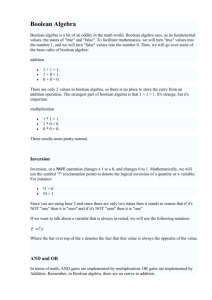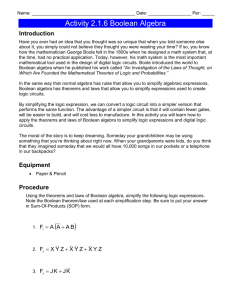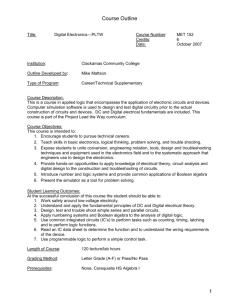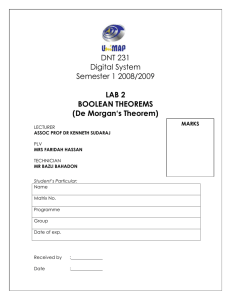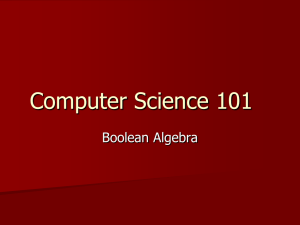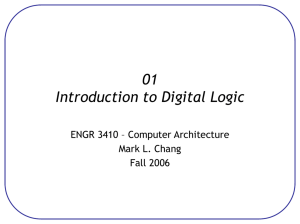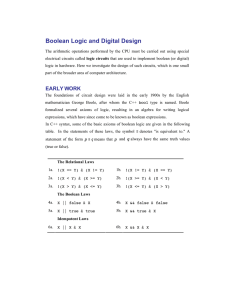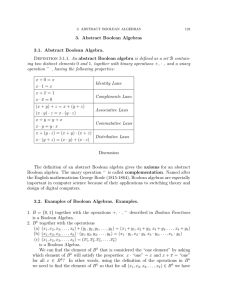Digital Logic Design Laboratory - Degree 36
advertisement
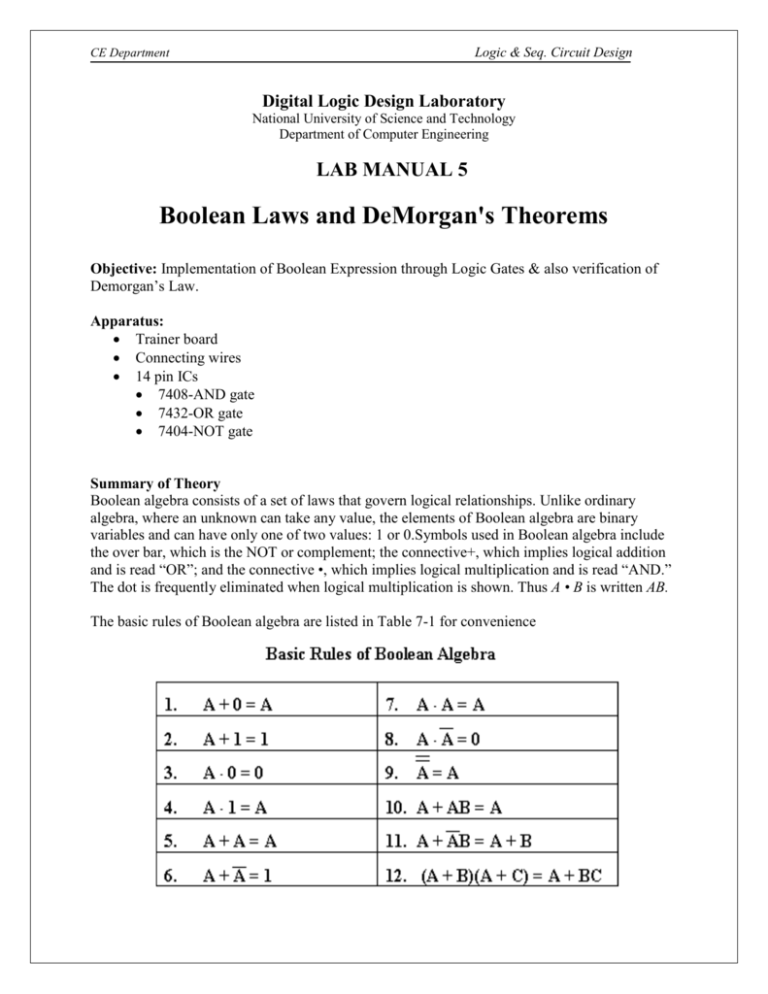
Logic & Seq. Circuit Design CE Department Digital Logic Design Laboratory National University of Science and Technology Department of Computer Engineering LAB MANUAL 5 Boolean Laws and DeMorgan's Theorems Objective: Implementation of Boolean Expression through Logic Gates & also verification of Demorgan’s Law. Apparatus: Trainer board Connecting wires 14 pin ICs 7408-AND gate 7432-OR gate 7404-NOT gate Summary of Theory Boolean algebra consists of a set of laws that govern logical relationships. Unlike ordinary algebra, where an unknown can take any value, the elements of Boolean algebra are binary variables and can have only one of two values: 1 or 0.Symbols used in Boolean algebra include the over bar, which is the NOT or complement; the connective+, which implies logical addition and is read “OR”; and the connective •, which implies logical multiplication and is read “AND.” The dot is frequently eliminated when logical multiplication is shown. Thus A • B is written AB. The basic rules of Boolean algebra are listed in Table 7-1 for convenience Logic & Seq. Circuit Design CE Department In addition to the basic rules of Boolean algebra there are two additional rules called Demorgan’s Theorems that allow the simplification of logic expressions Demorgan’s law can be stated in terms of logic terms, which is the 1st law states that, (x+y)`= x`y` And the second law state that (xy)`= x`+ y` Evaluation and Review questions: 1. Design circuits to prove Rules 1, 12 and Demorgan’s first law. Show the left side of the equation as one circuit and the right side as another circuit. 2. Write the Boolean expression for this logic gate circuit, and then reduce that expression to its simplest form using any applicable Boolean laws and theorems. Finally, prove experimentally that both the circuits perform the same logic. 3. Suppose you needed an inverter gate in a logic circuit, but none were available. You do however, have a spare (unused) NOR gate in one of the integrated circuits. Show how you would connect a NOR gate to function as an inverter. Use Boolean algebra to show that your solution is valid. 4. Use DeMorgan’s Theorem, as well as any other applicable rules of boolean algebra to simply the following expression so there are no complementation bars extending over multiple variables: Prove your simplification experimentally.
